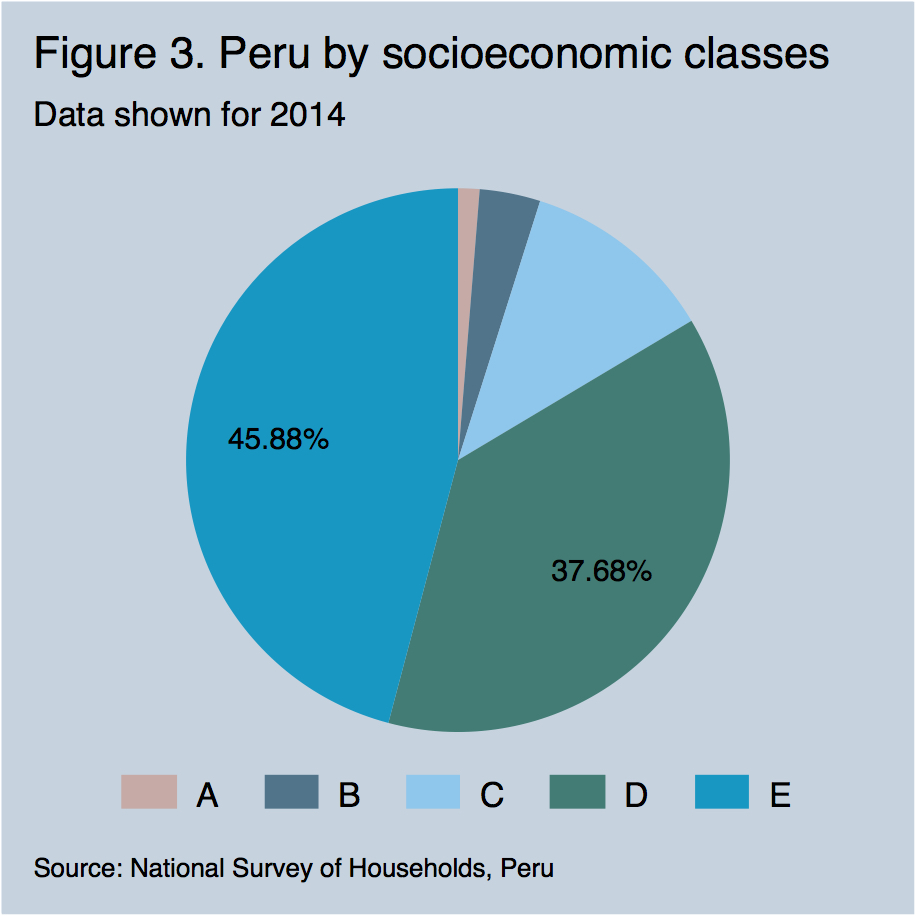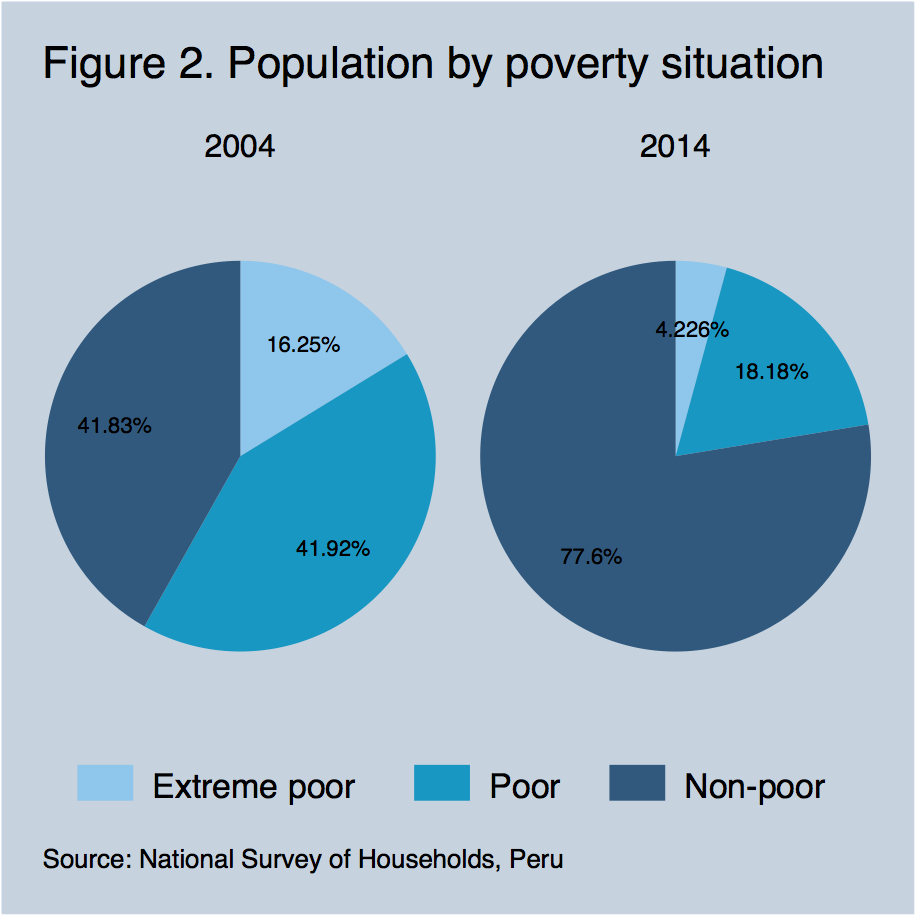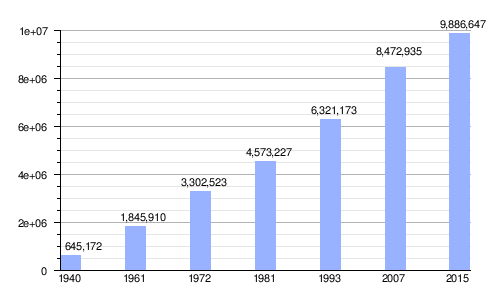|
|
Post by Arthur Figgis on Mar 23, 2016 23:59:48 GMT
Or at this rate, a Presidential election without any candidates. I hope the US are sitting up and taking notes. |
|
Deleted
Deleted Member
Posts: 0
|
Post by Deleted on Mar 24, 2016 1:09:15 GMT
Looking at Barnechea and Mendoza: While now excluded private university entrepreneur Acuña (the guy who plagiarized his PhD at a once-respectable university in Madrid, plus bought a couple of degrees in engineering from universities in Colombia and Trujillo just for good measure..) was snubbed by the Lima elite when he afterwards stated he had “never read a book in my life.” Barnechea on the other hand has told the viewers of a popular tv-show he has "a library of 15,000 books", taking up much more space than the homes of most voters, and as one journalist put it "footage of Barnechea visiting markets give the impression he has not been in one of these until now.." His running-mate, congressman Vitocho Garcia Belaunde, says he told him last week: “Alfredo, you are running for President of Peru, not King of England.”  Some evaluations of Mendoza and her chances: - The Lima leftists think she is too "old school/Chavista." - The Left is still considered the biggest "community of voters." - Mendoza has long standing ties to the President and Señora Humala. - She also has strong ties to the extreme anti-mining factions, whose riots prevented the construction of billion-dollar mines like Conga and Tia Maria + the hundreds of thousands of illegal gold miners in the mountains and jungle (so not a 100% Greenie, even if she talks the talk). - Backed by strong unions, such as the construction workers and teachers’ (an ex-teachers’ union rep herself). - handles herself well on television. - might well pick up some of Peru’s young millennials, who had flocked to Guzman. While Guzman and Mendoza are ideologically different on paper they both have ties to the Humalas. Some see both as frontrunners for the Humalas, paving the way for a comeback in five years. Guzman served a couple of years as cabinet secretary in the Government Palace, which brought him in close contact with the presidential couple. His First VP running mate was Juana Umasi, who is in the inner circle of the Humalas. So the disqualification of Guzman was hardly the work of the President + the First Lady is said to be behind the undermining of Daniel Urresti Elera, the PNP candidate (she also has a grudge against his First VP candidate, who is progressive ex-Lima Mayor Susana Villaran, who is not in "the party"). More likely a move from his enemies (either the old elite or internal foes within PNP). So Mendoza is likely the Humalas’ candidate by now, even if its a chance, and "post-ideological" Guzman would have been a better bid than a classic Andean leftist (despite her European roots, but well-educated Euro-Peruvians playing left wing populists to the campesinos is also a classic Peruvian thing). |
|
Deleted
Deleted Member
Posts: 0
|
Post by Deleted on Mar 24, 2016 21:13:26 GMT
Update from Reuters Must be the appeal from her opponents (+ possibly an appeal of the PKK case), that the JNE is setting aside time to hear during Easter. |
|
Deleted
Deleted Member
Posts: 0
|
Post by Deleted on Mar 28, 2016 18:31:53 GMT
Congressional numbers from the Ipsos poll:  |
|
Deleted
Deleted Member
Posts: 0
|
Post by Deleted on Mar 29, 2016 15:38:31 GMT
Link to the last Ipsos poll with the usual extra stuff (the one P. Jones posted the YouTube clip of): www.ipsos.pe/sites/default/files/opinion_data/Opinion%20Data%2028Marzo%202016.pdfTwo interesting results is that the largest group of undecideds are women from the two lowest social groups (D+E) from the interior (= non-Lima), especially rural areas. So from a group that is overwhelmingly likely to choose Fujimori and Mendoza - if they vote. So Mendoza still has a chance to surge past PKK. 46% thinks Keiko Fujimori should have been removed from the ballot and it seems the case has solidified the "would never vote for Fujimoro" vote making it harder for her in the run-off. But Mendoza is tied to a PNP related money laundering scandal and has refused to submit to a graphological examination of her handwriting to determine whether she signed the First Lady's notebook for women. 93% of respondents think she should. If I had to guess I would still expect Mendoza to surge past PKK in the final week based on the rural poor - Peruvians are used to scandals and do not expect their politicians to be squeaky clean, but they are tired of PNP and especially the First Lady, so that makes it more problematic. The Conservative press has compared her platform with Humala's in 2006, which was deemed too leftist to be viable. Humala ended up losing 47.4 to 52.6 to Alan Garcia (and its generally assumed he would have lost bigger if up against almost any other candidate..). Money laundering scandal: perureports.com/2016/03/21/peru-veronika-mendoza-tied-to-first-ladys-scandal/ |
|
Deleted
Deleted Member
Posts: 0
|
Post by Deleted on Mar 29, 2016 21:16:41 GMT
In the LOL Alan Garcia department:  (rechazo = reject or repudiate) |
|
Deleted
Deleted Member
Posts: 0
|
Post by Deleted on Mar 29, 2016 22:25:09 GMT
Quite large poll with a sample of 11,355 and a MoE of +/- 0.9 and the confidence interval is 95.5, but you always wonder if they can adequately poll the remote areas.
24.6% undecided nationally, but only 14.6% in Lima, so the big reserves are in the provinces ("the interior") - and disproportionally rural and female according to the Ipsos poll, so this could all be decided by the rural poor moving either towards Keiko (giving her a first round victory) or to Mendoza, giving us an all female run-off.
Though obviously no guarantee the poor in "the interior" will vote in large numbers.
16.9% plan to vote blank or spoil their ballot. 17.6% in Lima. So a bit more wasted votes in the city.
|
|
Deleted
Deleted Member
Posts: 0
|
Post by Deleted on Mar 29, 2016 22:37:27 GMT
There are far fewer destitute, but its still a very class divided society with the lower classes constituting the bulk of the electorate:   |
|
Deleted
Deleted Member
Posts: 0
|
Post by Deleted on Mar 29, 2016 22:58:15 GMT
A third of the electorate is in Metro Lima now:   |
|
Deleted
Deleted Member
Posts: 0
|
Post by Deleted on Apr 1, 2016 14:17:45 GMT
|
|
Deleted
Deleted Member
Posts: 0
|
Post by Deleted on Apr 1, 2016 14:48:38 GMT
Its worth noting that PPK the party polls at nearly a quarter of the votes, and only five parties will get seats on this distribution. Making them quite strong, which is a good thing because it includes a lot of well above average candidates.
Frente Amplio likely too disorganized to fully capitalize on a Mendoza surge.
|
|
Deleted
Deleted Member
Posts: 0
|
Post by Deleted on Apr 1, 2016 23:28:30 GMT
Peru has 25 provinces, which each make up a multi-member constituency. Metro Lima has 36 of 130 seats = 28%, but 35% of the voters. So Lima based parties - typically the moderate middle class parties - are shortchanged. Metro Lima is the only place small parties can get representation as all other provinces has a maximum of 7 seats.   |
|
Deleted
Deleted Member
Posts: 0
|
Post by Deleted on Apr 2, 2016 18:52:37 GMT
In theory Barnechea supporters could give up on him and start supporting PPK, but a big part of the Barnechea coalition are young, urban and socially liberal (which in Peru means wanting to allow abortion for rape victims and "marriage in all but name" for gays + anti-discrimination laws for women and minorities). Mendoza is a fairly classical leftist, but unlike Humala with his military background and roots in Indian etno-nationalism she is a young, female academics with a more modern style, maybe part of the young socially liberal urbanites would choose her over PPK (though the Lima middle class seem to see the left as a threat to growth and modernization).
The left is the biggest voting bloc and if it starts to coalesce around Mendoza it will be bigger than the anti-Fujimorist centre-right.
This will likely end with a Fujimori presidency with a Fujimorist controlled Congress, but given how unpredictable Peruvian politics is its hard to say what will happen in the run-off. You will have a lot of centrist/liberal urban "middle class" (=non-poor) voters having to choose between two things they hate: Fujimorists and the left.
The money laundering accusations doesn't seem to have stuck with Mendoza (given that Peruvians are used to a certain level of corruption for politicians) and may ironically have helped her because they gave her a higher name recognition, which was her biggest handicap.
|
|
|
|
Post by John Chanin on Apr 2, 2016 19:25:55 GMT
If you want to stop Keiko it looks like Kuczynski has to be your choice, but he is very much a traditional economic liberal from an elite background. Surely the people who elected Ollanta Humala will coalesce behind Mendoza now, and she will then lose to Keiko, with distinctly uncertain, but unlikely to be good,results.
|
|
Deleted
Deleted Member
Posts: 0
|
Post by Deleted on Apr 2, 2016 23:38:08 GMT
The Mendoza vs. Fujimori run-off numbers are interesting. Mendoza is actually ahead with the middle class (A-B) and tie with the lower middle class (C), and its Fujimoris margin among the poor that gives her the lead. Fujimori is ahead in Lima. They tie outside of Lima, but with a strong north-south divide (Mendoza is actually ahead of Fujimori in the south in the first round as well). Fujimori gets the 40+ group, while 25-39 is a tie and Mendoza wins the youth vote. 29% of Barnechea voters has Mendoza as second choice, so she does get part of the social liberal urban vote in a run-off.  |
|
Deleted
Deleted Member
Posts: 0
|
Post by Deleted on Apr 3, 2016 22:20:47 GMT
If you want to stop Keiko it looks like Kuczynski has to be your choice, but he is very much a traditional economic liberal from an elite background. Surely the people who elected Ollanta Humala will coalesce behind Mendoza now, and she will then lose to Keiko, with distinctly uncertain, but unlikely to be good,results. Humala and especially his wife are very unpopular (he has got a 15% approval rating). Mendoza is said to have a heterogenous coalition and is backed by a lot of young voters that didn't even have the right to vote back then and voters that simply wants "change". She is also socially liberal on issues such as abortion, gay rights, sex education, women's rights etc., which is a new dimension and many traditional leftists are SoCons. Maybe most of the leftist vote will coalesce around her, but a lot of Humala voters are likely lost for the left as they have benefited from economic progress and are turned off by Humala's corruption and Mendoza has strong ties to the unpopular first lady (incl. in the money laundering scandal mentioned above). I think her coalition will be somewhat different. Younger, more female, less leftist. Anyway, Peruvian elections are notoriously unpredictable. |
|
Deleted
Deleted Member
Posts: 0
|
Post by Deleted on Apr 3, 2016 22:41:40 GMT
Its wort noticing the Ipsos poll gives the Fujimorists 64 of 130 seats on 35.8% of the vote, while PPK + Frente Amplio gets 49 seats on 33.7%. And the three next parties 17 seats on 24.8%. The others simply split the anti-Fujimori vote too much.
|
|
Deleted
Deleted Member
Posts: 0
|
Post by Deleted on Apr 8, 2016 9:36:36 GMT
Peruvian election law forbids publication of polls in a week prior to election day, so we won't get any more official polls. Remains to be seen if others than Datum will try to leak polling results (several of the parties were conducting internals until the campaign curfew set in at midnight between Thursday and Friday, so later polls exist).
|
|
Deleted
Deleted Member
Posts: 0
|
Post by Deleted on Apr 8, 2016 20:34:02 GMT
Both the Datum and Ipsos polls have a MoE on 2.2, while GfK has 4.8. So might as well disregard the GfK poll and call it a tie for second place.
|
|
Deleted
Deleted Member
Posts: 0
|
Post by Deleted on Apr 10, 2016 13:19:12 GMT
Polls in Peru open today at 8am (2pm UK time). Polls close at 4pm (10pm UK time) and results are reported to be due at 9pm (3am UK time). Got a link to the results? |
|